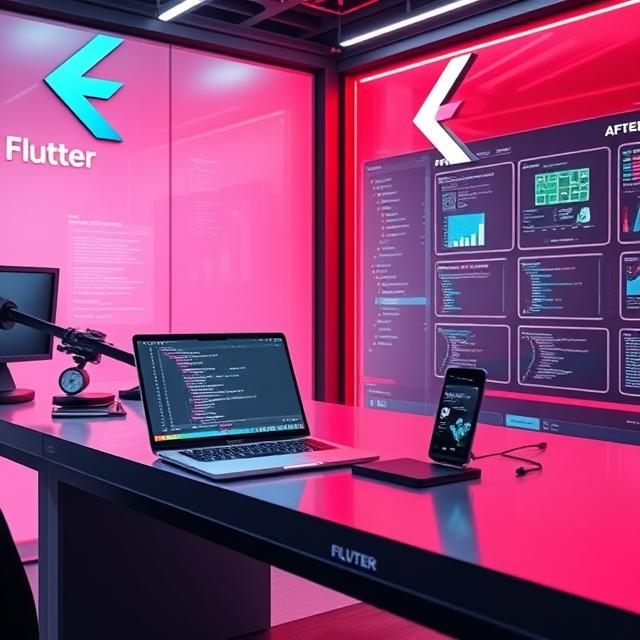In today’s quick-changing landscape of mobile app creation, Flutter, Google’s open-source UI toolkit, has become popular. It lets developers build apps that run natively on both iOS and Android from one set of code, which has shaken up the field. This blog post will delve into what Flutter is, its main perks, and how you can begin to build your own Flutter app.
What is Flutter?
At its heart, Flutter is a software development kit (SDK) that makes it easier to build high-performance apps for mobile, web, and desktop platforms all from one codebase. Flutter stands out because of its wide range of widgets you can customize, its strong rendering engine, and the hot reload feature. This lets developers see changes right away without having to rebuild the whole app. As a result, development cycles speed up and workflows become more productive.
Main Advantages of Developing Apps with Flutter
Here’s why Flutter has grown so popular among developers:
- Cross-Platform Development: Flutter lets coders use a single codebase for iOS and Android apps. This saves a lot of time and cuts down on costs to develop and maintain apps.
- Quick Coding with Hot Reload: The hot reload tool shows you right away how your code changes affect the app, without needing to restart. This makes it quicker to code, try new things, fix bugs, and polish your app.
- Beautiful UI: Flutter stands out for its eye-catching adaptable widgets. These let developers build attractive and quick-responding user interfaces. For iOS or Android design, Flutter puts you in full control of how your app looks and works.
- Native Performance: Unlike other cross-platform tools, Flutter apps turn into native code. This results in fast performance and fluid animations that seem like native apps.
- Open-Source and Community Support: Flutter is open-source. This means you can help improve it or use a wide range of packages, libraries, and tools made by Flutter’s active community.
The Flutter App Development Process
Creating a Flutter app goes through different steps starting from setting up the project to getting it out there. Here’s a quick look at how the development works:
- Project Setup: Begin by setting up a new Flutter project and choosing which platforms (iOS, Android, web, desktop) you plan to support.
- UI Design: Build the user interface with Flutter’s widget library. Flutter offers a variety of widgets for everything from layout structures to buttons and text fields.
- State Management: Handle the app’s state effectively using popular options like Provider, Riverpod, or BLoC. This helps make sure your app behaves the same way across all interactions.
- API Integration: Flutter makes connecting APIs for backend services easy. You can use HTTP requests or GraphQL to link your app to external data sources without hassle.
- Testing: Write unit tests, widget tests, and integration tests to ensure your app stays stable and high-quality. Flutter provides strong testing support to help you find bugs .
- Deployment: After you polish your app, you can put it on the App Store and Google Play Store using the same codebase.
Tips for Successful Flutter App Development
To get the best results from your Flutter development journey, check out these key pointers:
Stay Updated: Flutter keeps changing. Keep track of new versions and capabilities to make sure your app remains cutting-edge.
Learn Dart: Flutter uses Dart as its programming language. To make the most of Flutter, you need to get a handle on Dart.
Tap into Flutter’s Rich Ecosystem: Flutter’s community has built tons of packages and libraries that can cut down your work time. Check out and use these tools to speed up your development.
Make Your App Run Smoothly: Flutter is fast, but always keep an eye on your app size how it loads, and your animations. Making these better can lead to a happier user.
Stick to What Works: Follow Flutter’s rules for writing clean code, making your app run well, and keeping it easy to fix down the road.
